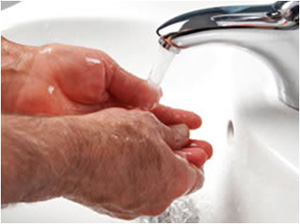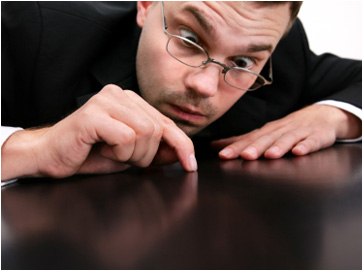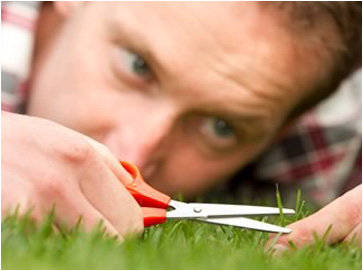 It’s normal, on occasion, to go back and double-check that the iron is unplugged or your car is locked. But if you suffer from obsessive-compulsive disorder (OCD), obsessive thoughts and compulsive behaviors become so excessive they interfere with your daily life. No matter what you do, you can’t seem to shake them. But help is available. With treatment and self-help strategies, you can break free of the unwanted thoughts and irrational urges and take back control of your life. It’s normal, on occasion, to go back and double-check that the iron is unplugged or your car is locked. But if you suffer from obsessive-compulsive disorder (OCD), obsessive thoughts and compulsive behaviors become so excessive they interfere with your daily life. No matter what you do, you can’t seem to shake them. But help is available. With treatment and self-help strategies, you can break free of the unwanted thoughts and irrational urges and take back control of your life.
What is obsessive-compulsive disorder (OCD)?
Obsessive-compulsive disorder (OCD) is an anxiety disorder characterized by uncontrollable, unwanted thoughts and repetitive, ritualized behaviors you feel compelled to perform. If you have OCD, you probably recognize that your obsessive thoughts and compulsive behaviors are irrational – but even so, you feel unable to resist them and break free.
Like a needle getting stuck on an old record, obsessive-compulsive disorder (OCD) causes the brain to get stuck on a particular thought or urge. For example, you may check the stove twenty times to make sure it’s really turned off, wash your hands until they’re scrubbed raw, or drive around for hours to make sure that the bump you heard while driving wasn’t a person you ran over.
Understanding OCD obsessions and compulsions
Obsessions are involuntary, seemingly uncontrollable thoughts, images, or impulses that occur over and over again in your mind. You don’t want to have these ideas but you can’t stop them. Unfortunately, these obsessive thoughts are often disturbing and distracting.
Compulsions are behaviors or rituals that you feel driven to act out again and again. Usually, compulsions are performed in an attempt to make obsessions go away. For example, if you’re afraid of contamination, you might develop elaborate cleaning rituals. However, the relief never lasts. In fact, the obsessive thoughts usually come back stronger. And the compulsive behaviors often end up causing anxiety themselves as they become more demanding and time-consuming.
Most people with obsessive-compulsive disorder (OCD) fall into
one of the following categories:
- Washers are afraid of contamination. They usually have cleaning or hand-washing compulsions.
- Checkers repeatedly check things (oven turned off, door locked, etc.) that they associate with harm or danger.
- Doubters and sinners are afraid that if everything isn’t perfect or done just right something terrible will happen or they will be punished.
- Counters and arrangers are obsessed with order and symmetry. They may have superstitions about certain numbers, colors, or arrangements.
- Hoarders fear that something bad will happen if they throw anything away. They compulsively hoard things that they don’t need or use.

Signs and symptoms of obsessive-compulsive disorder (OCD)
Most people with obsessive-compulsive disorder (OCD) have both obsessions and compulsions, but some people experience just one or the other.
OCD signs and symptoms: Obsessive thoughts
Common obsessive thoughts in obsessive-compulsive disorder (OCD) include:
- Fear of being contaminated by germs or dirt or contaminating others.
- Fear of causing harm to yourself or others.
- Intrusive sexually explicit or violent thoughts and images.
- Excessive focus on religious or moral ideas.
- Fear of losing or not having things you might need.
- Order and symmetry: the idea that everything must line up “just right.”
- Superstitions; excessive attention to something considered lucky or unlucky.
OCD signs and symptoms: Compulsive behaviors
Common compulsive behaviors in obsessive-compulsive disorder (OCD) include:
- Excessive double-checking of things, such as locks, appliances, and switches.
- Repeatedly checking in on loved ones to make sure they’re safe.
- Counting, tapping, repeating certain words, or doing other senseless things to reduce anxiety.
- Spending a lot of time washing or cleaning.
- Ordering or arranging things “just so.”
- Praying excessively or engaging in rituals triggered by religious fear.
- Accumulating “junk” such as old newspapers or empty food containers.
Therapy as treatment for obsessive-compulsive disorder (OCD)
The most effective treatment for obsessive-compulsive disorder is often cognitive-behavioral therapy. Antidepressants are sometimes used in conjunction with therapy, although medication alone is rarely effective in relieving the symptoms of OCD.
 Cognitive-behavioral therapy for obsessive-compulsive disorder (OCD) Cognitive-behavioral therapy for obsessive-compulsive disorder (OCD)
Cognitive-behavioral therapy for obsessive-compulsive disorder (OCD) involves two components:
1. Exposure and response prevention involves repeated exposure to the source of your obsession. Then you are asked to refrain from the compulsive behavior you’d usually perform to reduce your anxiety. For example, if you are a compulsive hand washer, you might be asked to touch the door handle in a public restroom and then be prevented from washing. As you sit with the anxiety, the urge to wash your hands will gradually begin to go away on its own. In this way, you learn that you don’t need the ritual to get rid of your anxiety—that you have some control over your obsessive thoughts and compulsive behaviors.
2. Cognitive therapy focuses on the catastrophic thoughts and exaggerated sense of responsibility you feel. A big part of cognitive therapy for OCD is teaching you healthy and effective ways of responding to obsessive thoughts, without resorting to compulsive behavior. |
